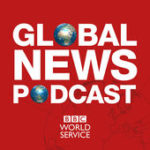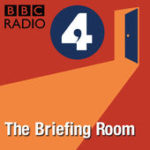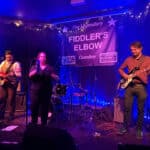I’ve never been so sad to leave anywhere as Koh Lipe. Rather than hopping between lots of different Thai islands – which would have been fun in its own right – we opted to plop ourselves down on this one very small island, splurge on staying at its nicest resort and just totally relax for five glorious days. I really did not want to leave.
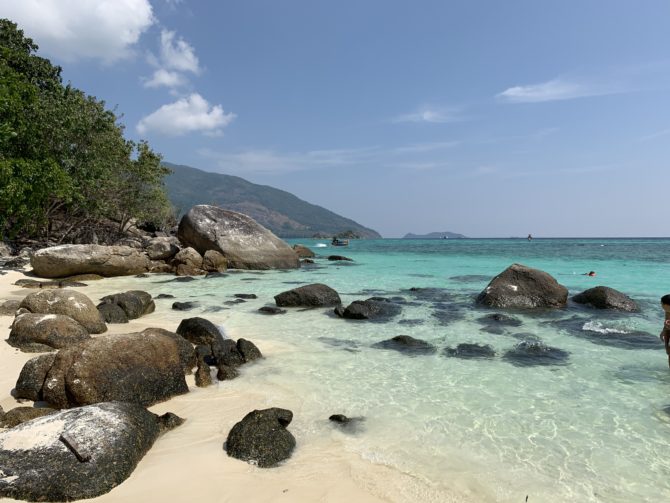
After getting our Malaysian exit stamps at the harbour in Langkawi (it always feels good to get the right stamps now) we surrendered our passports to the ferry company before our uneventful ride to Koh Lipe. The reason for this is that you disembark directly onto the beach at Koh Lipe so they need an incentive for you to stick around and clear immigration instead of just running off giddily. The guy coordinating immigration on the Thai side had clear ambitions to become a gameshow host, riling up the crowd with some classic call-and-response (“It’s that way to Sunrise Beach, OK?” “OK!”) before holding up each of our passports in turn and calling out the name and nationality (“USA… Randi!) of the next contestant to approach the window for an entry stamp.
Once we were all done, the guy meeting us from Ten Moons Resort whisked us and our bags into a small, private boat and sped us around the corner of the island to our resort where we could check-in to our room immediately. Bliss.


Ten Moons really is… perfect. The whole place is serenely calm and luxurious without being overly swanky or pretentious. For example, I really liked that they had a big box of beach toys and sandcastle-building equipment for kids to play with in addition to snorkelling goggles and flippers being available. Koh Lipe is home to three main beaches: Sunrise, Sunset and Pattaya. While technically not a ‘private’ beach (as, nicely, you can always walk down the full length of any beach unimpeded) the beach at Ten Moons is tucked away discreetly behind some rocks at the end of Sunrise Beach and was never crowded. You can also tell it’s a special place because the sand switches to the ultra-fine variety as soon as you reach it 😉
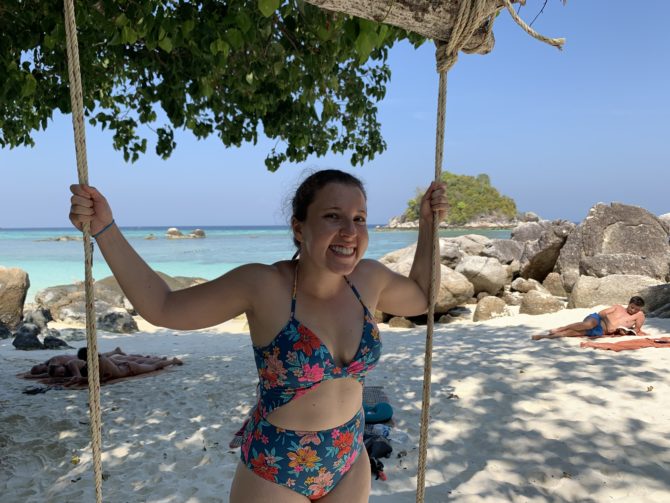

Usually shallow water is a negative at beaches, since you have to wade out a long way before being able to fully immerse in the water. But here, the water was so warm you could just sit back on the sandy seafloor – without ever getting cold – and watch the fish swim by. (Award for most interesting-looking fish goes to the swordfish, or at least what I assume was a swordfish, although honourable mention for the many, many crabs scuttling around purposefully on the rocks.) Best of all, I made use of the flippers to swim across to the tiny island opposite and found myself on a beach of one.

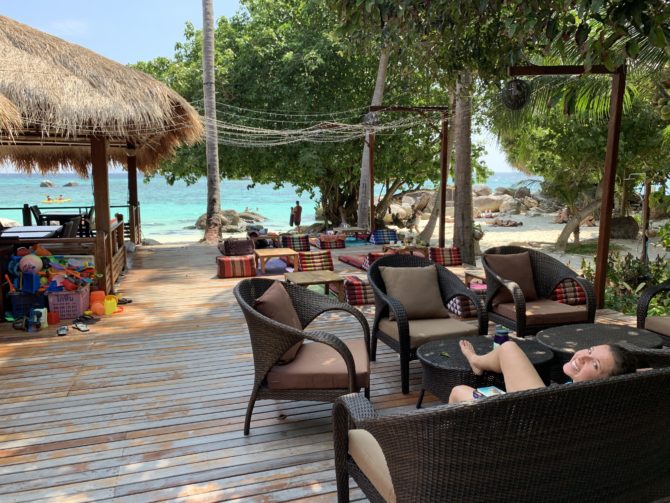
Our bungalow was a short walk up some wooden staircases with its own little secluded balcony, so when we weren’t down at the beach we were usually sitting up here in towels reading or playing Coloretto. That said, it really does only take half an hour or so to walk across the whole island so we did occasionally venture out to watch the beautiful sunsets from Sunset Beach or find food to eat. While I did have some great Thai meals, I’d be lying if I said my favourites weren’t the two amazing Indian dinners we had… although Thai iced tea was a great discovery and the perfect thing to cool down with over lunch.


I owe Randi for reminding me that it was Pancake Day this morning and we were able to keep the tradition alive by choosing pancakes for breakfast at Ten Moons before checking out and catching our ferry (more of a speedboat) on to the next destination: Phuket. The journey here came with an unexpected bonus hour on Koh Lanta so we can now say that we did (very briefly!) see another of the small Thai islands. But really, I don’t need anywhere else but Koh Lipe.
Aside from blogging extensively about podcasts, my time alone in Kuala Lumpur can be summarised by this WhatsApp exchange with Catherine:

The shopping centre where I accomplished both #1 and #2 from the list above is called Berjaya Times Square and is an odd place, like a rainforest where the ecosystem is very different in the treetops from the jungle floor. The bottom is busy and a little ritzy, including a piano staircase which plays the notes as you step on them. But as I looked for a hairdresser I ventured higher and higher (in a lift which curiously plays a recorded message of “sorry to keep you waiting” no matter how long you’ve actually been waiting) and the atmosphere became ever quieter and the shops more mundane until I felt I was the only person around. Apparently there’s a university up there if you go high enough but I didn’t want to start pressing dangerous buttons in the great glass elevator.
Talking of lifts: it was noticeable that the floors in the condominium where we stayed avoided the numeral 4 (for superstitious reasons) leading to the invention of floors 3A and 13A and so on. I have a real superstition against travelling in vehicles designed by superstitious people, but at least this was preferable to skipping the numbers completely, as in the buildings which jump from floor 12 to 14.

The model mosques were only a small part of the Islamic Arts Museum of Malaysia but were definitely the most interesting part for me, ranging from the Great Mosque of Mecca to smaller ones from China to New Mexico and always melding local architecture with the basics of any mosque. I pretty much exhausted all of my solo tourism energy after this point, however, and for most of the rest of the time I only moved between a small triangle of a roti place, a coffeeshop and our AirBnb until Randi returned from her successful mission to London.


Our next leg of travelling took us back up north by train (yay!) to Alor Setar where we caught a ferry to Langkawi Island. I had foolishly booked the train tickets online from the station named ‘Kuala Lumpur’ but when we returned from Penang the other week we had already discovered that Kuala Lumpur is, in fact, a portal into an alternate universe where humans have barely survived an apocalyptic plague. The real station you want to leave from is Kuala Lumpur Sentral, opened in 2001 to replace Kuala Lumpur and barely 10 minutes down the track but unhelpfully abbreviated to KL Sentral on the train company’s booking website so you don’t spot it exists. We ended up booking an extra ticket to cover KL Sentral to Kuala Lumpur so that we could arrive at a station with breakfast and lunch options to buy rather than zombies to fend off.
Anyhow, the train journey itself was smooth (albeit very cold) and our ferry to Langkawi didn’t catch fire as had happened the day before. We therefore arrived with plenty of time for sunset on the beach and dinner at what became our go-to place in Langkawi for the majority of our meals. They do a really good fish pie, alright?

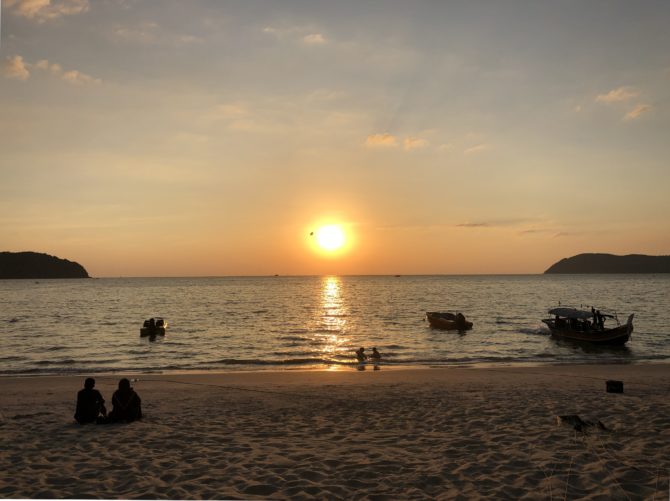

There are a bunch of tourist attractions in Langkawi and we did start out with plans to visit some of them – honest! – but then laziness took hold and it seemed better to wind up the Malaysian portion of our travels with rest, relaxation and repeated attempts to find somewhere outside to sit and read without loud music playing in the background. (I know this makes us sound really old but unfortunately we haven’t yet developed the hearing loss of the genuinely old which might actually have helped in this scenario.) It’s also worth noting that the beer here is dramatically cheaper than anywhere else we’ve been in Malaysia.
Regardless, it was great to finally reach the beach… and our next stop (assuming we get into Thailand) is going to double down on this theme 😉


A very long time ago I had a ‘My TV’ page on this website which listed the shows I enjoyed. It wasn’t really a great idea since I don’t actually watch much TV (although now I watch even less) and after a while someone even suggested I turn it into a wiki so that others could contribute to it, which I thought was very silly so I took the whole thing down.

Anyway, podcasts are a much bigger part of my life and consume a surprising amount of time, so I thought I would use this space to list them out. They are mostly political. But please note that this post is not called The Top Political Podcasts You Absolutely Must Listen To, or even a set of recommendations. It’s just what works for me, and since there are only so many podcast-able moments in the day (mostly walking to and from work, back when that was something I did) these happen to be what have settled in to my routine so far.
P.S. Having said that, after typing everything out it is interesting for me to notice that all of the shows with a single presenter are headlined by men. There are many female voices on the mixed-presenter and panel shows, but nevertheless it’s a bias which I don’t like and will try to shake up. Now if only I could convince Melissa Benn to host a weekly show…
Podcasts Where I Listen To Every Episode
The Weeds (Vox Media)
This is my favourite podcast and the one I most look forward to. A twice-weekly roundtable discussion on US politics and policy, The Weeds is a good mix of reaction to major news events (e.g. Trump’s national emergency declaration or any election results) and evergreen policy topics (such as childcare or the minimum wage) but always with a huge amount of actual policy substance, expertise and insight. If you want to know how complex systems actually work (e.g. healthcare, immigration, crime) then you should listen to this. It is a great shame that there is nothing which does quite the same thing for the UK.
Talking Politics (University of Cambridge)
Hosted by Professor David Runciman, this has a more academic feel than The Weeds and is less concerned with policy than raw political economy and geopolitics. It’s also a bit more doom-and-gloomy, especially with Helen Thompson (the most interesting participant) on hand to explain why anything with a glimmer of positivity will actually collapse in a tangle of intellectual contradictions. That said, I do really enjoy this.
Revisionist History (Panoply)
Malcolm Gladwell’s always fascinating podcast about “things overlooked or misunderstood” which is guaranteed to make you think differently about a topic. The most memorable example was the episode about Brown v. Board of Education (the 1954 Supreme Court decision striking down racially-segregated schools) which was always presented to us in school as a triumphant moment for civil rights. We never considered the impact on black teachers.
Political Thinking with Nick Robinson (BBC Radio 4)
The BBC’s former Political Editor, Nick Robinson, and his weekly “big interview” with a British political figure. I basically half-like this podcast. I like getting away from short, adversarial interviews and giving people more time to express themselves. But it is a little too focused on stories of people’s upbringing, perhaps because Robinson feels uncomfortable being “gentler” while taking about contentious policy details. He should listen to a few Ezra Klein episodes and try it.
More Perfect (NPR)
I loved this show! One of the most on-point recommendations which I’ve ever received (thanks, McKenna!) this is a fascinating look at the history of the Supreme Court. Unfortunately each subsequent series has become ever more gimmicky, culminating in a slightly cringe-worthy album of songs about each amendment to the US Constitution which – though they still told very interesting stories about them – was filled with the religious reverence for the written constitution which always haunts American politics. That said, I learnt a lot from this show and heartily recommend it.
Podcasts Where I Listen To Most Episodes
Friday Night Comedy (BBC Radio 4)
This rotates between whatever show is currently playing in the BBC Radio 4 comedy slot. I always listen to Dead Ringers and The Now Show and usually catch The News Quiz, but obviously skip the strange and unfunny stuff which crops up in-between. They just need to add Just A Minute in here and it would be perfect.
The Ezra Klein Show (Vox Media)
Ah, Ezra Klein. One of the hosts on The Weeds and a co-founder of Vox in the first place, this is a twice-weekly series of long (sometimes absurdly long) interviews with public figures and intellectuals. Occasionally it can feel repetitive (I hear about the agonies of Twitter on this show far more often than I ever bother to look at Twitter) but by and large the conversations are rewarding to listen to.
Podcasts Where I Pick And Choose
Planet Money (NPR)
This is a really good and deservedly popular show, telling interesting stories from the world of economics. There’s just too much to listen to, so I only end up hearing the episodes which particularly catch my eye.
Worldy (Vox Media)
Sigh. This should be The Weeds but for the world! Only that’s clearly impossible because the audience doesn’t have enough context, the hosts can’t be as immersed in the details of each individual country and holding provocative opinions about ‘other people’ always sounds more patronising than talking about your own country, so it ends up being a slightly frustrating jaunt through US foreign policy obsessions.
Global News Podcast (BBC World Service)
This is the twice-daily global news bulletin that I know I should be listening to but never seem to get around to anymore because it is less ‘fun’ than everything else, which I guess demonstrates the dilemma for the Worldy crew. Still, even just scanning each contents of the episode before guiltily deleting it unplayed will remind me of the global news stories I shouldn’t be forgetting about.
Pod Save America (Crooked Media)
This is the candy floss of political podcasts – fine to enjoy occasionally, but not really doing you any good and leaving you feeling a bit queasy if you over-indulge. Weirdly (because it’s a weird thing to get upset about) I remember getting particularly annoyed during Roy Moore’s candidacy at their blithe refusal to imagine why Republicans might logically want to vote for him.
FiveThirtyEight Politics (FiveThirtyEight)
Really addictive during a presidential election (like refreshing the FiveThirtyEight homepage every half an hour to see the graph change) but ultimately a little pointless since opinion polling is such a narrow lens on the world. During the next presidential election I’m not sure I will be able to resist listening, but it’s probably a bad habit.
The Briefing Room (BBC Radio 4)
This actually is quite good if you need a short 30-minute crash course on a current affairs issue with a British focus, such as the rollout of Universal Credit or the increase in homelessness. It’s never going to have the time to really dive deeply into an issue, but it is a good example of the ‘explainer’ rather than ‘debate’ format of journalism.
The Documentary Podcast (BBC World Service) / Analysis (BBC Radio 4)
I’m bundling these together because episodes of Analysis are often scooped up and included under the banner of The Documentary, which has a more international focus. Either way, this is the classic tradition of BBC current affairs journalism on a vast range of topics.
Other shows which I sometimes enjoy, depending on the political climate, but don’t have a lot to write about:
- UK Politics (FT)
- Alphachat (FT)
- Politics Weekly (The Guardian)
- More or Less (BBC Radio 4)
- The Media Show (BBC Radio 4)
- Westminster Hour (BBC Radio 4)
- The Good Fight (Slate)
One-Off Series I Have Enjoyed
The Assassination (BBC World Service)
Do you remember when Benazir Bhutto, the former Prime Minister of Pakistan, was assassinated at a rally in 2007? No? This is an incredible investigation which worms its way deep into the heart of the Pakistani state and is well worth your time.
Slow Burn (Slate)
Yes, I know in theory this is coming back but each season is pretty self-contained. The first covers the impeachment of Richard Nixon, the second of Bill Clinton, and both ask the question: what was this like to live through at the time? What contingencies and coincidences led to history proceeding as it did? Whatever you think you know about Watergate and/or Monica Lewinsky, this show will show you something new.
Intrigue: The Ratline (BBC Radio 4)
Just an interesting series about the life of a high-ranking Nazi and his mysterious disappearance and then death after the Second World War. The story is made possible through the help of his son, now an old man who sounds like he lives in a disintegrating castle, who is not himself a Nazi but is determined to cling to his vision of his parents as good people caught in bad circumstances.
Time for a double bill of Malaysian quick trips. We started with a bus from Kuala Lumpur to the town of Tanah Rata in the Cameron Highlands, an area of mostly countryside which is popular with both domestic and foreign tourists for the scenery, the wildlife and the relatively high altitude which offers a respite from the high temperatures elsewhere. Be warned, though, that the final section of the bus journey gets incredibly windy and is a big price to pay for visiting if you’re susceptible to motion sickness.
We shared our AirBnb unit with a Dutch couple whom we befriended after they made us tea and showed us creepy photos of the spiders and scorpions they had spotted on their nighttime jungle walk. We did not opt for anything so adventurous; since we only had one full day here, we booked ourselves on the Eco Cameron Full Day Experience Tour which takes you around all of the tourist sites in an easy and efficient way. A disadvantage of this tour is that we didn’t really do any substantial walks through the Cameron Highlands… but on the other hand, Randi’s reaction to the (admittedly giant) snake we drove past on the road suggested that we made the right choice. We also shared the tour with only one other person, a Swiss woman named Tanya who was both good company and hilariously put out that Randi didn’t want to haggle down the cost of some incredibly cheap market food.
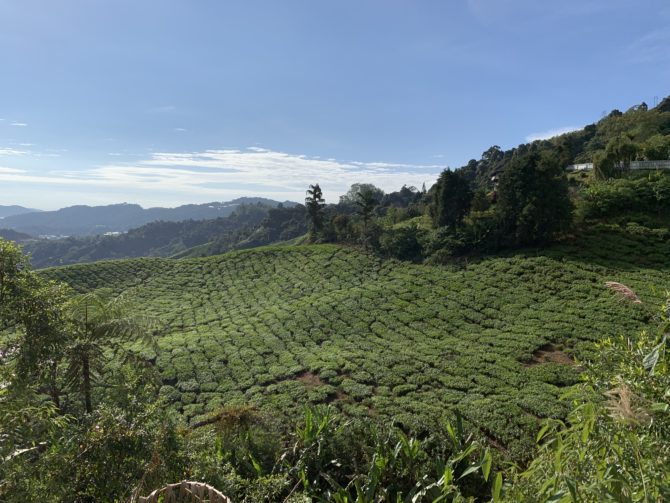
It must be said that the quality of the attractions on the tour was quite variable. The highlights were the Boh tea plantations – our guide was not enthusiastic about the quality of the tea itself, but conceded that if you’re adding milk it doesn’t really matter anyway – and the Mossy Forest. After a short walk to a viewing platform to look down at the rolling green forest below, our guide talked us through some of the plants which grow here. I know that sounds like the kind of thing you only pretend to find interesting because you feel like you should, but he made it all genuinely fascinating and by the end Randi was convinced we should be earning Scout badges. On the other hand, a ‘strawberry farm’ is not the world’s most exciting type of farm, and the local museum was a somewhat bizarre mixture of local history and dad jokes.
There was also some difference between me and Randi over the quality of the butterfly farm. I was quite pleased that they had padded it out with cages of snakes and scorpions along with the immobile bullfrogs and well-camouflaged geckos – it meant I could take some photos of these animals at much less personal risk than the Dutch couple had incurred. Randi was less keen.


After the Cameron Highlands our next stop – for a few hours – was Ipoh, allowing us to transfer from bus to train and finally getting some railway travel into our journey. As the train company puts it, it’s “the rail way to see Malaysia”. Fun fact: they choose to play a selection of BBC nature documentaries for the whole journey.
The central streets of Ipoh were interesting to wander around (thankfully we were able to lock up our bags at the train station) and after a nice lunch we caught our train to Butterworth, which is a short ferry ride away from George Town. George Town is the capital of the state of Penang and is also located on Penang Island, which is not the same thing – I feel compelled to point this out because I tried googling whether it should be spelt “George Town” or “Georgetown” and instead found a lot of angry letters to the local paper about how people thoughtlessly confuse these terms and how disrespectful it is to a UNESCO World Heritage site.
I never got any firm consensus on “George Town” vs. “Georgetown”, by the way. My phone uses both interchangeably within the same app and even the Malaysian government doesn’t appear to care. Feel free to send me angry letters if you feel my arbitrary choice is wrong.

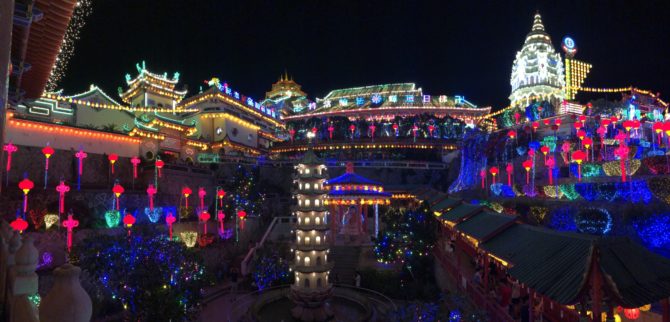
I didn’t love George Town when we first arrived. The afternoons are the worst times of day with the city at peak heat and humidity and the pavement situation is worse than Kuala Lumpur. Things improved greatly in the evening after a delicious Indian meal when we decided to get a ride out to the Kek Lok Si Temple (or Temple of Supreme Bliss) to see the light display for Chinese New Year. I’m sure the enormous Buddhist complex is impressive to visit at any time of year, but we felt very lucky to see it all lit up like this. Since we were too lazy to walk up Penang Hill it also gave us our best view out over the city as a whole.

The next morning we set out to explore George Town’s famous street art. There are really two different types of street art at play here: the colourful murals (such as Children on a Bicycle) and the ‘Marking Georgetown’ set of iron cartoons. The latter depict various aspects of local life and come with short explanations which are well worth reading and give a real flavour of the history and culture of George Town.
We also sampled some of the famous street food from hawker stalls. And yes, the food is very tasty (especially the various different incarnations of roti!) but I refuse to pretend that it’s actually really charming to weave between cars and motorbikes for your food. #pedestrianisepenang


We could have spent longer exploring the rest of Penang Island, but by this point Randi and I had started dreaming of our ultimate dream island – sky blue seas, unspoilt sandy beaches – and I actually started giggling with excitement as we sat in a George Town café to finish our research and make the necessary bookings for the next stage of our adventure into Thailand. First, though, we are taking a pause from travelling for the rest of the week so that Randi can make a quick hop to the UK and complete the final final final stage of her visa process. So last night we caught the train back down to Kuala Lumpur and I have installed myself in a condo unit for a week (with a pool, naturally) to wait for her. And get a haircut. Because I really need a haircut by now.

We’re back in the real world after catching our bus from Singapore to Kuala Lumpur, the capital of Malaysia. Although I visited for work once before I stayed in the satellite city of Petaling Jaya with only brief forays into KL proper. This time we stayed in Pudu, near the central district of Bukit Bintang, and our crazy walk from the bus to the hotel on the first night (is that a road or a motorway? and where exactly are we supposed to cross it?) left a lasting impression of a city with a road layout which is neither friendly to pedestrians nor drivers. It’s also a huge place, and we didn’t even attempt to see everything in just a couple of days, but here are our highlights.
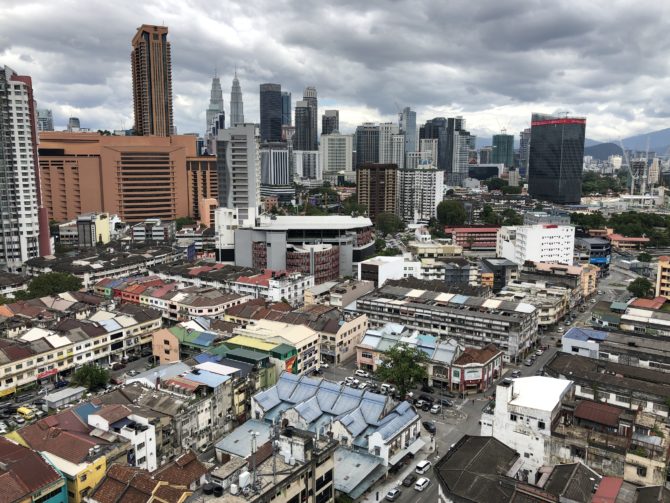
We started with a relaxed morning and a breakfast where I first encountered chicken floss. Ridiculous as it sounds, I had to look up whether this actually contained meat (after all, mince pies do not!) but yes, indeed it does. For lunch we took Nolan’s suggestion and headed to the basement of the Lot 10 mall, where the receipt for my meal came with the sage advice that “today’s wastage is tomorrow’s shortage”. (In case you were wondering, we seem to be stalking Nolan and Rebecca across Asia, always a couple of days behind.)

From here a strange and wonderful series of events occurred. I noticed on Google Maps that we were close to Kuala Lumpur’s ‘Upside Down House’ and made a snap decision that we had to visit it at once. On the way I tried to take a shortcut through a shopping centre, and while puzzling at a map someone suddenly asked if I was Katie Self’s brother. I am! We had somehow stumbled across Adrian, my sister’s friend from uni, in a city of millions. After grabbing a surprised selfie we let him get back to work but made plans to hang out together the night afterwards, when he took us out for Chinese food in Jalan Alor market and then a pitcher of sangria at a nearby bar.

The Upside Down House, which turned out to be part of the attractions at the KL Tower, was just as delightful as I had expected and it takes great self-control to use only one of the photos of us on this blog rather than all of the many, many upside down rooms we visited.


I am proud of the fact that although Grab (the Uber of Southeast Asia) is very, very cheap – and we did use it once – we were otherwise able to take public transport for both the short inner-city journeys and the longer commuter rail journey out to the Batu Caves. (Although we did mistime our journey out there which left us with a long wait for the next train, prompting an emergency visit to to the nearest museum which happened to be dedicated to Malaysia’s third Prime Minister. He was beloved by the people, apparently.)




The Batu Caves are perhaps the most prominent tourist attraction in Malaysia and the big change from my last visit is the painting of the steps in beautiful rainbow colours. The thieving monkeys (nicknamed the ‘mafia monkeys’ by our tour guide in the Cameron Highlands later on, which is very appropriate) were as out in force as ever, although it was quite amazing to watch the baby monkeys being carried along by their parents and just generally to watch their interactions with each other as they scampered up and down the cave walls.
And just like last time I was disappointed with the behaviour of some of the humans, especially the one who threw a plastic bottle at a monkey to get a reaction. It really doesn’t help our species’s image.
The other main landmark we visited in Kuala Lumpur was the National Mosque of Malaysia, which has some slightly unfortunate 60s architecture (not awful, but I preferred the Masjid Jamek Mosque which we passed at night) and has got so prepared for tourists that they print a #visitKL hashtag on the purple robes you are given to wear.


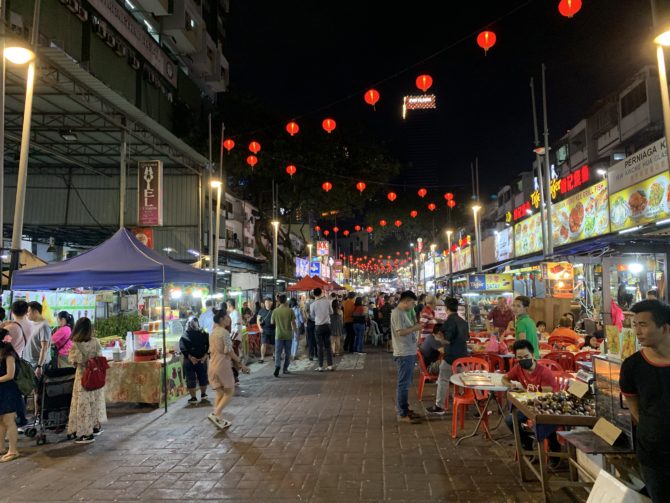
Finally, a word of appreciation for Kuala Lumpur’s bus terminal, Terminal Bersepadu Selatan. This is hands-down the best bus terminal I’ve ever used, partly because they have centralised the ticket sales and check-in counters for all of the bazillion bus companies so you don’t have to wander through looking for the right one. You also wait inside for your bus right up until it pulls up at the gate, which is a huge improvement on waiting on the kerb as you are slowly suffocated by exhaust fumes.
If I were constructing my ideal city out of little pieces of the real world, I certainly wouldn’t take Kuala Lumpur’s roads. But I would take its bus terminal.
















